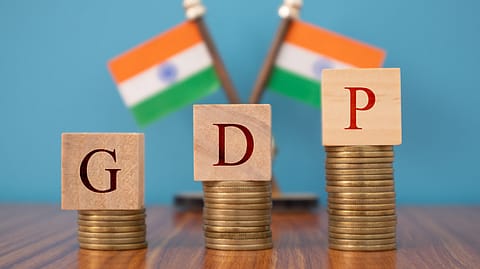World Bank raises India's FY26 GDP growth forecast to 6.5% on strong domestic demand
The World Bank report underscores the role of AI and trade openness in driving productivity and job growth in South Asia, which faces a potential slowdown but remains the fastest-growing region worldwide.

The World Bank raised India's GDP growth forecast to 6.5% for FY26 from its earlier projection of 6.3% in June, attributing it to the country's resilient domestic demand, strong rural recovery, improved agricultural output and the recent tax reforms.
The World Bank has said that India will remain the world's fastest-growing major economy, and projected the economy to grow 6.3% in FY27. The World Bank's projections on growth are in line with the RBI’s real GDP growth estimate for 2025-26 at 6.5%, with Q1 at 6.5%, Q2 at 6.7%, Q3 at 6.6%, and Q4 at 6.3%.
The World Bank also says growth in South Asia is projected to be robust at 6.6% this year—but a significant slowdown looms on the horizon. "Reforms to promote trade openness and technology adoption could help the region create jobs and catalyse growth, says the World Bank in its twice-a-year regional outlook."
Released today, the latest South Asia Development Update, Jobs, AI, and Trade, projects growth in the region to slow to 5.8 percent in 2026, a downward revision of 0.6 percentage points from the April forecast.
“South Asia has enormous economic potential and is still the fastest-growing region in the world. But countries need to proactively address risks to growth,” said Johannes Zutt, World Bank Vice President for South Asia. “Countries can boost productivity, spur private investment, and create jobs for the region’s rapidly expanding workforce by maximising the benefits of AI and lowering trade barriers, especially for intermediate goods.”
The report also recommends harnessing the potential of AI to boost productivity and incomes. The rapid development of AI is transforming the global economy and reshaping labour markets. South Asia’s workforce has limited exposure to AI adoption due to the predominance of low-skill, agricultural and manual jobs. But moderately educated, young workers, especially in sectors such as business services and information technology, are vulnerable. Since the release of ChatGPT, job listings have fallen by around 20% in jobs most exposed to, and most replaceable by AI, relative to other occupations.
Recently, global ratings agency S&P Global Ratings also retained India's GDP forecast at 6.5% for 2025-26 (FY26) on strong domestic demand, favourable monsoon, GST reforms and the government’s infrastructure push. “We forecast India's GDP growth to hold steady at 6.5% this fiscal year (year ending March 31, 2026). We expect domestic demand to remain strong, supported by a largely benign monsoon season, cuts in the income tax and the goods and services tax, and accelerating government investment,” S&P said in its Economic Outlook Asia-Pacific Q4 2025 report.